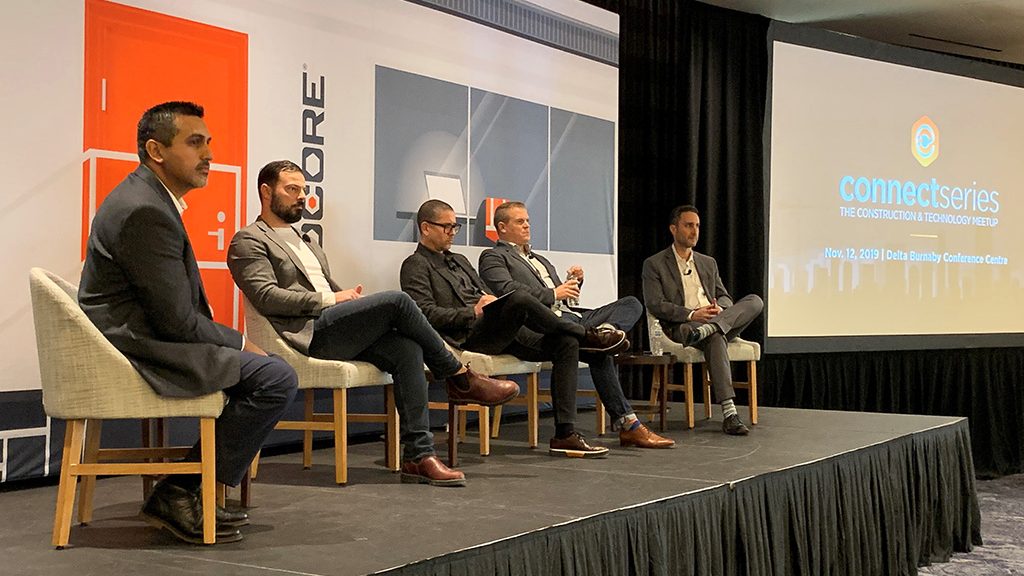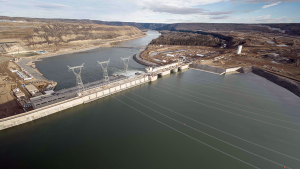A panel of construction owners and experts see potential and pitfalls in the construction industry’s future when dealing with less people and more data.
Procore Technologies held a Connectseries panel recently in Burnaby, B.C. examining how technology is shaping construction. The panel was moderated by Procore vice president of Canada Jas Saraw and featured panelists Axiom Builders Inc. vice president Michael McDonough, Urban One Builders president Allan Beron, Etro Construction principal Mike Maierle, and Novacom Building Partners president Brandon Drewlo.
The panel agreed technology implementation for its own sake is counter-productive. Drewlo said for technology to work, it must get buy-in from employees.
“It’s a sales pitch of ‘will this make my life better?’ If it adds complexity and it’s just one more tool then it won’t be used,” Drewlo said.
“You can throw all the tools you want at employees, but if you don’t have a team and training you’ve failed your people. Giving people the tools and the training, that’s where we have to provides resources. Resources mean money and that’s where people fail in implementation,” Maierle added, and pointed out his firm has two analysts “looking at if these tools will make our jobs easier and make our employees jobs easier.”
“You need ease of use, functionality, and to take out redundant steps but also, can we afford not to do this in order to manage risk in a low margin business? We want to take away the data entry aspect of the business, to hire smart people and use their brains to analyze the data,” Beron said.
“The common thread is people. Any way you slice it, Internet of Things, robotics, and Procore can solve a lot of things but at the end of the day you need a culture that has people first,” Saraw said.
The volume of data extracted from the field has leapt forward in recent years and Drewlo said his firm is using that data to decide where to focus their efforts.
“It’s a cliche, but data does tell a story. There’s a risk that if you just dive in, it’s too much,” he said.
He added everyone in the industry is dealing with information overload, and when working with clients “if we can show them a dashboard stating where their project is at, it’s a huge value for them.”
McDonough said not all firms are prepared for the amount of data available to them.
“Your business has to be ready for the data. I don’t know what I’d do with the info. But I do know we’re going to get ready for it,” he said.
He added the industry is moving towards 3-D modelling and BIM and said the future depends on getting everyone into the same virtual models for collaboration.
“If you think of a superintendent, that was in his head. That’s where the model was,” McDonough said.
“With complex projects you need buy in from the entire stakeholder group. You want supers in the room with the technology guys to build the model together,” Beron added.
Maierle said data will help streamline the jobsite.
“all of us have too many superintendents, coordinators, and project managers on site. This will help us get back to a reasonable amount of people,” he said.
All of the panelists agreed the industry has to become more collaborative in order to more forward.
“We want to create a more collaborative ecosystems with consultants and trade partners. We need to look broader and change the industry together,” Beron said.
McDonough said a key factor driving change and technological adoption in the office and on the site is data platforms working together instead of in separate “monster” packages.
There’s a hunger for working together and feeling like we’re on the same team,” Drewlo added. “Platforms are a part of that, but we have to be all in the same place and not in silos.”
“We see a more collaborative environment and often times it’s the consultants listening to trade partners, and we don’t get as much resistance from the consulting side as we used to. Resistance is declining as we go forward,” he said.











Recent Comments